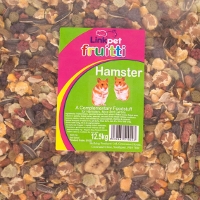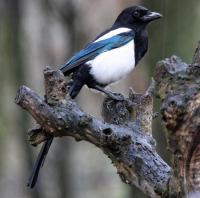- Home
- FAQs
- Customer Video Gallery
- Customer Photo Gallery
- Bird Facts
- Bird Food Blog
- Bird Information
- Feeding Advice
- Small Animal Information
- A to Z of Guinea Pigs
- A to Z of Hamsters
- A to Z of Rabbits
- Basic Care for Guinea Pigs
- Basic Care for Hamsters
- Basic Care for Rabbits
- Basic care for Chinchillas
- Basic care for Ferrets
- Basic care for Gerbils
- Basic care for Mice
- Basic care for Rats
- Buying a Healthy Small Animal
- Does your Reptile need a Licence
- Equipment for Ferrets
- Equipment for Hamsters
- Equipment for Mice
- Equipment for your Chinchilla
- Equipment for your Gerbil
- Equipment for your Guinea Pig
- Equipment for your Rabbit
- Keeping a House Rabbit
- Dog Information
- Cat Information
- Customer Information
- Fat Balls
- Suet Pellets
- Straights
- Seed Mixes
- Suet Treats
- Mealworms
- Bird Feeders
- My Account
A to Z of Hamsters
24 species of Hamster are known, but only one, the Syrian/Golden hamster, has become popular as a pet.
The Syrian hamster was first discovered in 1839 and was initially introduced to the UK approximately 40 years later. However, the breeding population died in 1910 and thus hamsters were then not kept in captivity until 1930 when a nest was discovered in Syria.
Twootz provides Hamster food and Small Animal fruity mix which are both ideal for your Hamsters well being.
Since the breeding of the original hamsters brought from Syria, many different coat varieties have been developed. Now at least 25 colours are known along with three variations of coat type. These include Long Haired, Satin and Rex.
Some of the most popular coat colours, markings and types are listed below:
COAT COLOURS:
COAT TYPES:
COAT MARKINGS:

The Syrian hamster was first discovered in 1839 and was initially introduced to the UK approximately 40 years later. However, the breeding population died in 1910 and thus hamsters were then not kept in captivity until 1930 when a nest was discovered in Syria.
Twootz provides Hamster food and Small Animal fruity mix which are both ideal for your Hamsters well being.
Since the breeding of the original hamsters brought from Syria, many different coat varieties have been developed. Now at least 25 colours are known along with three variations of coat type. These include Long Haired, Satin and Rex.
Some of the most popular coat colours, markings and types are listed below:
COAT COLOURS:
- Albino - white coat, red eyes and pink ears distinctly recognize the albino. Dark eared albinos are available, but described as ‘incomplete’
- Banded - combines with any coat colour, a distinctive white band runs right round the hamster’s body
- Black - black coat and undercoat with black ears and eyes
- Blonde - the Blonde resembles the cinnamon, but in a paler form with black eyes
- Cinnamon - this is probably one of the most popular varieties today. They are characterised by the bright orange fur, dark grey undercoat and white stomach
- Cream - there are three different recognised forms of the cream; the ruby-eyes, the red-eyes or the black-eyed
- Dark Grey - the popularity of grey hamsters is growing, with the dark grey being the favourite. The hamster features a coat of dark grey with grey-blue undercoat
- Golden - the Golden is available in shades varying from light to dark golden (mahogany)
- Honey - the Honey has a yellowish/orange coloured coat with deep ruby red eyes
- Lilac - pale dove grey with pinkish tinge to coat
- Smoke Pearl - a recent development in the grey coat colours. The coat has a pearlised effect
- Yellow - the coat is a rich yellow with a black ‘fleck’ throughout the coat. The yellow richness is offset by black eyes
COAT TYPES:
- Long-haired - often referred to as ‘Teddy Bear’ hamsters due to their appearance. They are available in single or multiple coat colours
- Satin - one of the oldest coat types. The coat is of glossy appearance enhancing the colour of the coat
- Rex - the rex has an unusual coat, which arises from the shortened guard hairs. This gives the coat a ruffled appearance and the texture can be likened to velvet. The Rex also has shorter and curled whiskers
COAT MARKINGS:
- Banded - this is a distinct feature whereby a white band around the body divides normal coat colour
- Spotted - this is characterised by dominant spots over the normal coloured markings of the coat
- Tortoiseshell - the tortoiseshell features a pattern of equal patches of white, yellow and coloured fur








